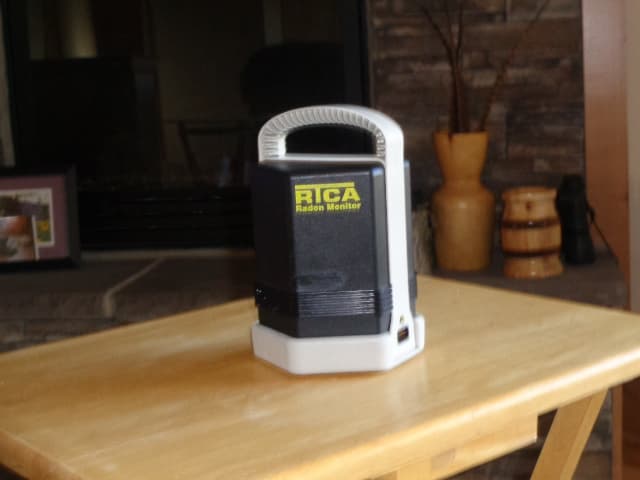Length of Time to Test
There are two general ways to test your home for radon:
Because radon levels vary from day to day and from season to season, a short-term test is less likely than a long-term test to tell you your year-round average radon level. However, if you need results quickly, a short-term test may be used to decide whether to fix the home.
Short-Term Testing:
The quickest way to test is with short-term tests. Short-term tests remain in your home from two days to 90 days, depending on the device. There are two groups of devices which are more commonly used for short-term testing. The passive-device group includes alpha-track detectors, charcoal canisters, charcoal liquid scintillation detectors, and electric ion chambers. The active device group consists of different types of continuous monitors.
Whether you test for radon yourself, or hire a state-certified tester or a privately certified tester, all radon tests should be taken for a minimum of 48 hours. A longer period of testing is required for some devices.
Long-Term Testing:
Long-term tests remain in your home for more than 90 days. Alpha-track and electret ion chamber detectors are commonly used for this type of testing. A long-term test will give you a reading that is more likely to tell you your home’s year-round average radon level than a short-term test. If time permits, long-term tests (more than 90 days) can be used to confirm initial short-term results. When long-term test results are 4 pCi/L or higher, the EPA recommends mitigating the home.
Doing a Short-Term Test…
If you are testing in a real estate transaction and you need results quickly, any of the following three options for short-term tests are acceptable in determining whether the home should be fixed. Any real estate test for radon should include steps to prevent or detect interference with the testing device.
When Choosing a Short-Term Testing Option…
There are trade-offs among the short-term testing options. Two tests taken at the same time (simultaneous) would improve the precision of this radon test. One test followed by another test (sequential) would most likely give a better representation of the seasonal average. Both active and passive devices may have features which help to prevent test interference. Your state radon office can help you decide which option is best.
Short-Term Testing Options
What to Do Next
Passive:
Take two short-term tests at the same time in the same location for at least 48 hours.
or
Take an initial short-term test for at least 48 hours. Immediately upon completing the first test, do a second test using an identical device in the same location as the first test.
Fix the home if the average of two tests is 4 pCi/L or more.
Active:
Test the home with a continuous monitor for at least 48 hours.
Fix the home if the average radon level is 4 pCi/L or more.
Using testing devices properly for reliable results.
If you do the test yourself:
When you are taking a short-term test, close windows and doors and keep them closed, except for normal entry and exit. If you are taking a short-term test lasting less than four days, be sure to:
- Close your windows and outside doors at least 12 hours before beginning the test.
- Do not conduct short-term tests lasting less than four days during severe storms or periods of high winds.
- Follow the testing instructions and record the start time and date.
- Place the test device at least 20 inches above the floor in a location where it will not be disturbed and where it will be away from drafts, high heat, high humidity, and exterior walls.
- Leave the test kit in place for as long as the test instructions say.
- Once you have finished the test, record the stop time and date, re-seal the package, and return it immediately to the lab specified on the package for analysis.
You should receive your test results within a few weeks. If you need results quickly, you should find out how long results will take and, if necessary, request expedited service.
If you hire a qualified radon tester:
In many cases, home buyers and sellers may decide to have the radon test done by a qualified radon tester who knows the proper conditions, test devices, and guidelines for obtaining a reliable radon test result. They can also:
- evaluate the home and recommend a testing approach designed to make sure you get reliable results;
- explain how proper conditions can be maintained during the radon test;
- emphasize to occupants of a home that a reliable test result depends on their cooperation. Interference with, or disturbance of, the test or closed-house conditions will invalidate the test result;
- analyze the data and report measurement results; and
- provide an independent test.


